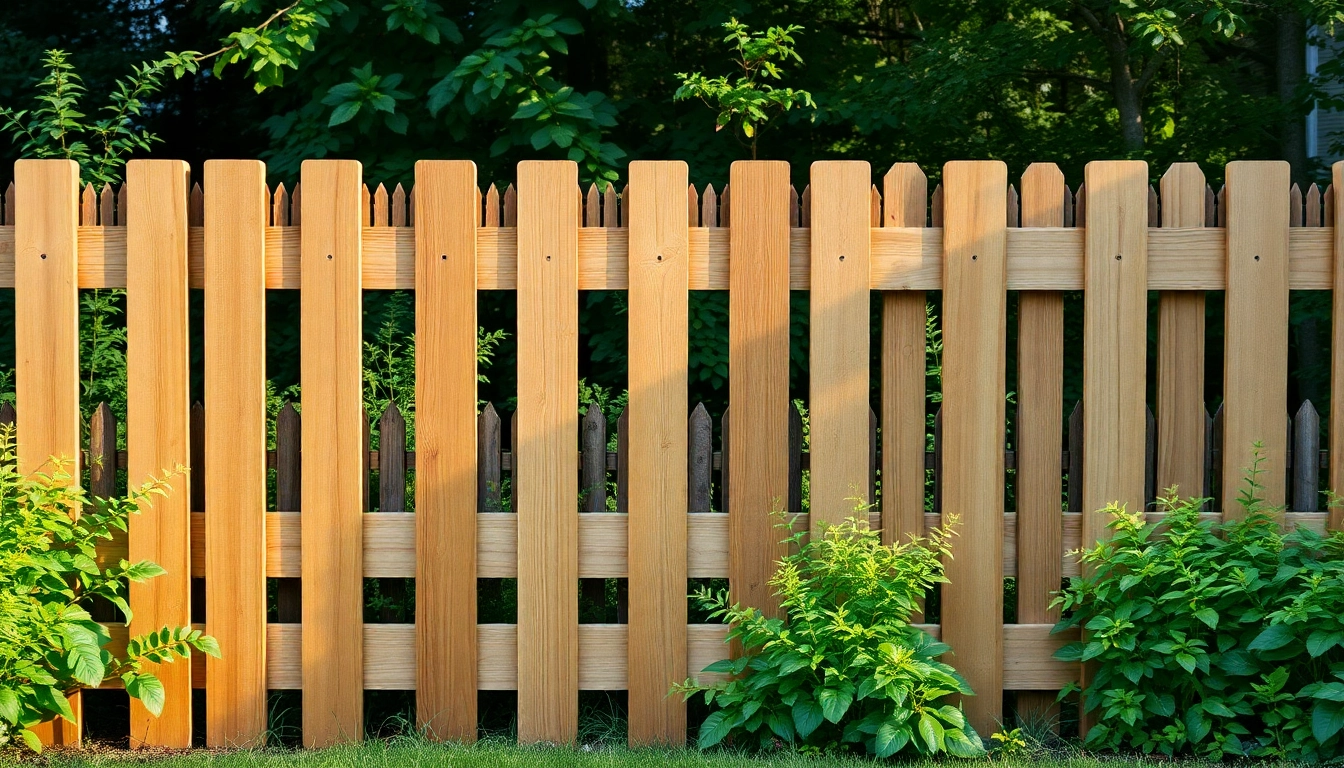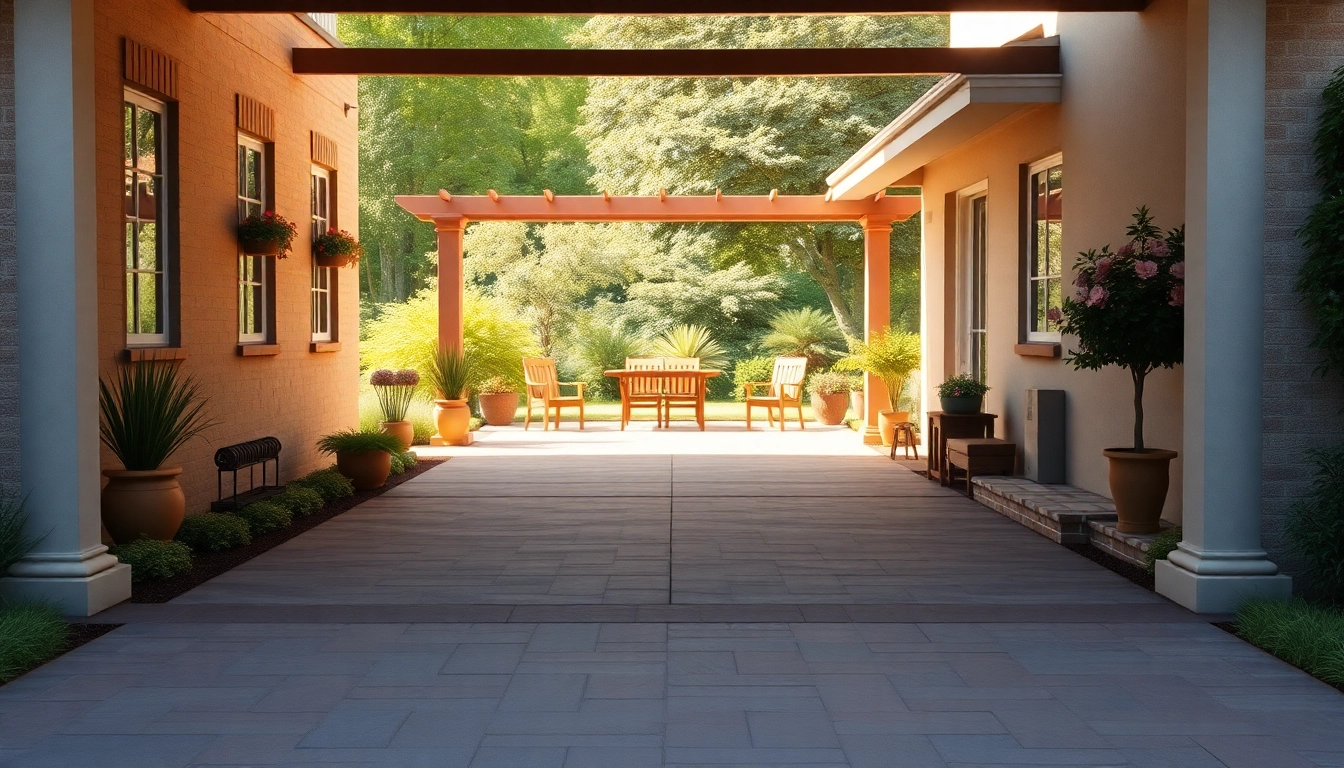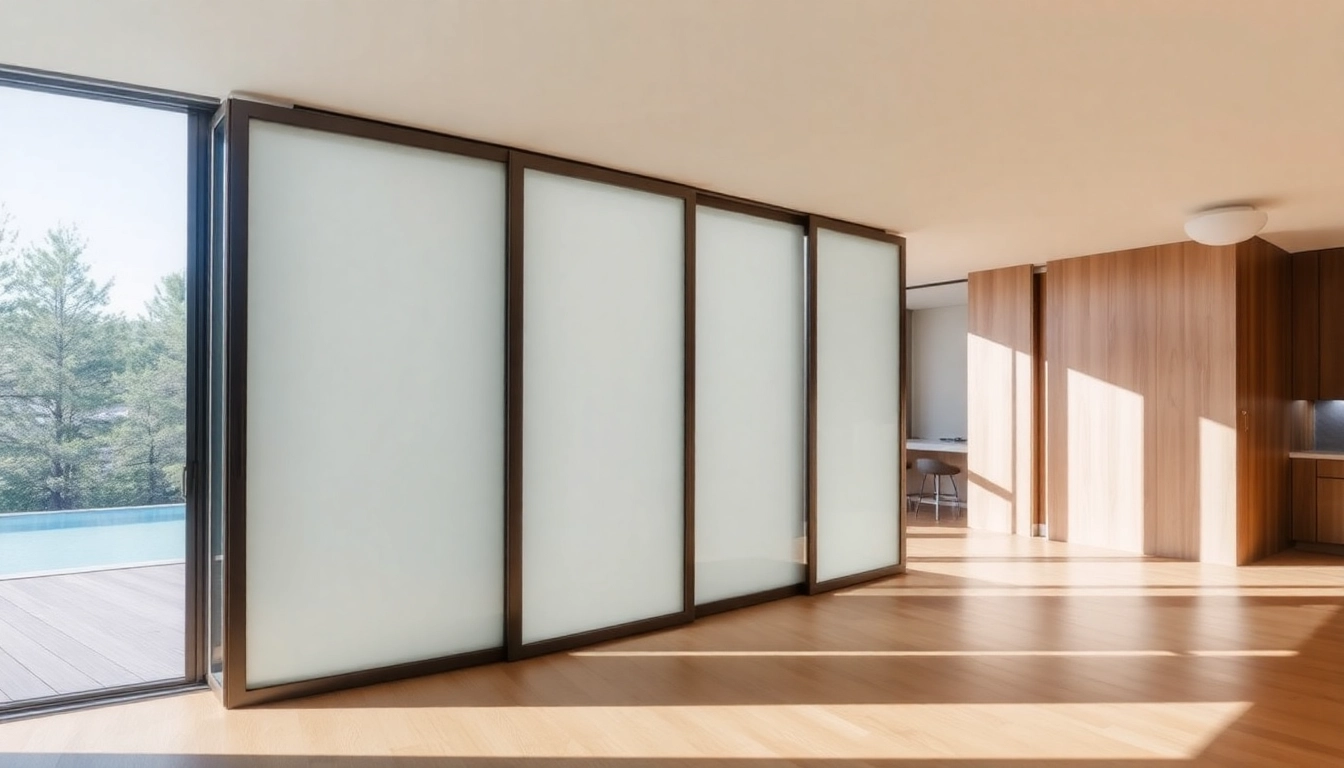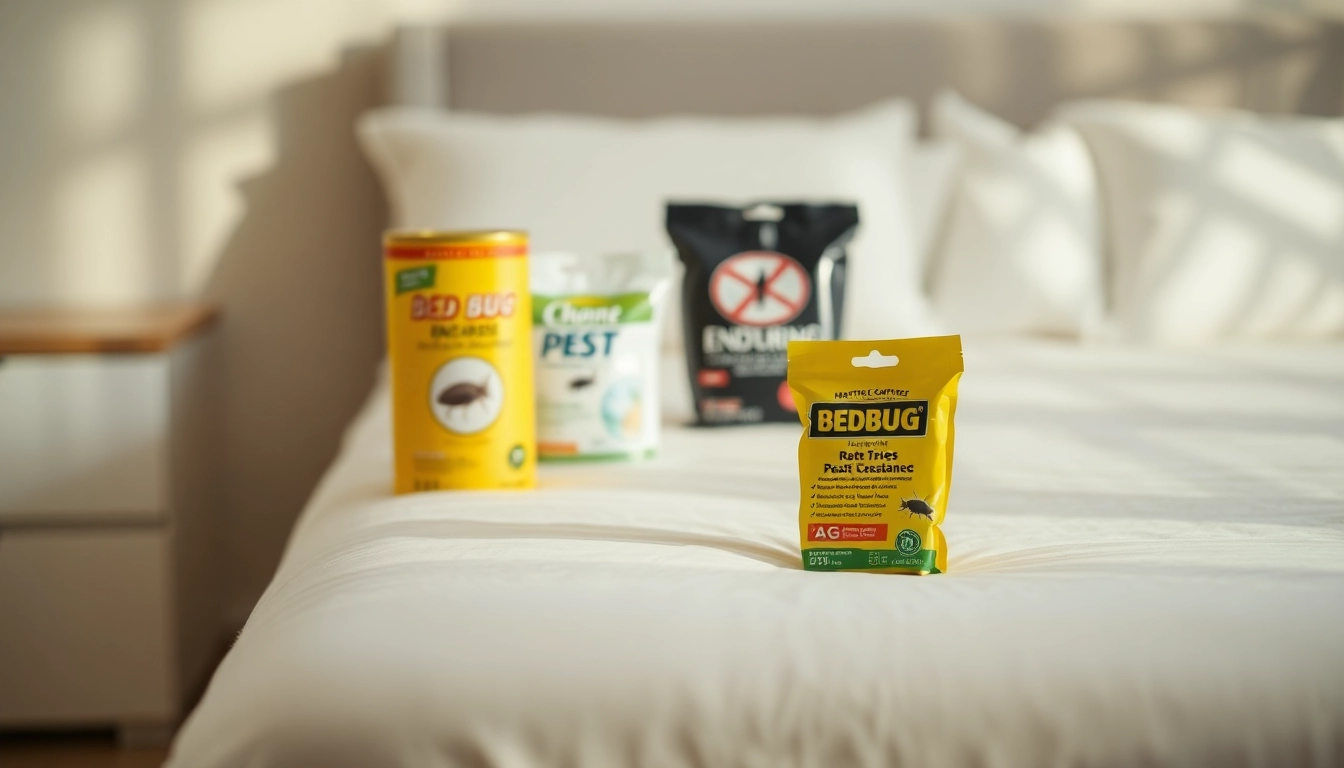Understanding Fencing Options in Manchester
Fencing is an essential element of any property, providing not only security but also aesthetic appeal. With the abundance of fencing options available, homeowners in Manchester can customize their outdoor spaces to reflect their personality and cater to their needs. In this guide, we will explore various types of fencing options, the benefits of installing a quality fence, and how to choose the right one for your property, allowing you to make an informed decision. If you’re interested in exploring quality fencing Manchester, you’re in the right place.
The Benefits of Installing a Quality Fence
Investing in quality fencing provides numerous advantages beyond mere aesthetics. Firstly, it enhances security by acting as a barrier against intruders. A robust fence can deter trespassers and protect your family and property. Secondly, fencing adds a layer of privacy, allowing you to enjoy your outdoor space without worrying about prying eyes. This can be particularly valuable in urban areas where properties are close together.
Moreover, a well-installed fence can increase your property’s value. Prospective buyers often see a fence as an asset, especially if it complements the overall landscape or garden design. Quality fencing is also durable, reducing the need for frequent repairs, maintenance, or replacement over time, thus saving you money in the long run.
Types of Fencing Materials Available
When selecting fencing materials for your property, it’s essential to consider factors like durability, aesthetics, and maintenance. The most common materials available include:
- Wood: A traditional choice that offers a natural look. Wood fences can be painted or stained to match your property’s color scheme but require regular maintenance to prevent rot and weather damage.
- Vinyl: A modern, low-maintenance option resistant to rot and insects. Vinyl fences come in various colors and styles but may not offer the same traditional charm as wood.
- Metal: Options like wrought iron, aluminum, or chain-link are popular for their strength and durability. Metal fences often provide higher security but might require additional treatments to prevent rust.
- Composite: Made from a combination of wood fibers and plastic, composite fencing mimics the look of wood while providing improved durability and low maintenance.
- Brick and Stone: For those looking for a robust and timeless look, brick or stone walls offer unmatched durability and can act as stunning decorative features.
How to Choose the Right Fence for Your Property
Choosing the right fence involves assessing your needs, preferences, and property layout. Here are some critical factors to consider:
- Purpose: Define the primary purpose of your fence. Is it for privacy, security, aesthetics, or marking boundaries? Your answer will significantly influence your choice.
- Style: Consider how the fence style aligns with your home’s architecture. A cohesive look enhances both curb appeal and property value.
- Height: Check local regulations regarding fence height limits. Ensuring compliance will keep your project hassle-free.
- Maintenance: Evaluate how much time and effort you’re willing to invest in fence upkeep. Wood fencing, for instance, might require annual staining, while vinyl might need only occasional cleaning.
- Budget: Set a budget that includes both initial installation costs and potential maintenance expenses.
Analyzing Local Fencing Regulations in Manchester
Before commencing your fencing project, familiarize yourself with local regulations, as Manchester has specific guidelines governing fencing construction. Understanding these rules is crucial to avoid costly modifications or fines.
Understanding Planning Permissions for Fencing
In many areas of Manchester, you may not need planning permission if your fence is below a certain height. However, if your property is located along a highway or in a conservation area, special regulations may apply. It’s advisable to check with your local council or visit their website to confirm what’s required before installing any fencing.
Height Restrictions and Boundary Guidelines
Height restrictions vary depending on whether your property is residential or commercial and its location relative to the street. Typically, a fence over two meters high in a back garden will require planning permission. Additionally, ensure you understand boundary guidelines to avoid disputes with neighbors. It’s always recommended to maintain clear, open lines of communication with adjacent property owners to mitigate potential disagreements.
Staying Compliant with Local Laws
Staying compliant with local fencing laws not only avoids fines but helps to maintain community standards. Regularly check for any updates to regulations, as local councils can amend guidelines, especially if development patterns change over time. Consulting with a local professional or legal advisor can provide clarity and peace of mind during your fencing project.
Installation Process for Fencing in Manchester
The installation process can be straightforward if you plan effectively and follow systematic steps. Whether you decide to tackle the project yourself or hire professionals, understanding the general installation process will help you ensure a secure and durable fence.
Step-by-Step Guide to Installing Your Fence
Here’s a general step-by-step guide to installing a fence:
- Planning: Measure your property and determine the location of the fence. Assess the type of fence you want and check local regulations.
- Gather Materials: Purchase your chosen materials in required quantities. This may include posts, panels, nails, or tools.
- Mark the Area: Use stakes and string to outline where the fence will be installed, ensuring straight lines and correct alignment.
- Set Posts: Dig holes for the posts, typically 2-3 feet deep for stability, and set them in concrete. Ensure they are level before allowing the concrete to set.
- Attach Panels: Once the posts are secured, attach the fence panels according to manufacturer instructions.
- Finishing Touches: Apply any necessary finishes, such as paint or stain, and check for sturdy construction. Perform a final inspection for any adjustments needed.
Hiring Professional Fencing Installers vs. DIY
When considering whether to hire professionals or take on a DIY approach, weigh the pros and cons of each method. Hiring professionals can provide you with expert installation, ensuring compliance with local regulations and potentially saving time and effort. Furthermore, skilled installers can anticipate challenges that arise, offering solutions you might not have considered.
On the other hand, a DIY project can be rewarding both personally and financially. Homeowners can save on labor costs, and the satisfaction of completing the installation can enhance your connection to your property. However, consider your experience level with similar projects, as rushing through may lead to costly mistakes or an unsafe fence.
Common Challenges and How to Overcome Them
Every fencing project comes with its share of challenges. Common issues include:
- Uneven Ground: If your property has uneven terrain, it may complicate installation. Solutions include adjusting post height or using a stepped design for the fence.
- Weather Conditions: Rain or wind may delay installation. Always plan for potential weather disruptions and schedule work accordingly.
- Disputes with Neighbors: Boundary disputes can occur if you aren’t clear about property lines. A land survey may be necessary to resolve these issues amicably.
- Material Quality: Using subpar materials can result in damaged fences that require premature replacement. Always select high-quality fencing materials that come with warranties.
Maintenance Tips for Your Fencing in Manchester
Fencing, like any part of your home, requires maintenance to ensure longevity and appearance. The right care can significantly extend the life of your fence and enhance its functionality.
Daily Care to Extend Your Fence’s Lifespan
For all types of fencing materials, daily maintenance begins with visual inspections. Look for signs of damage, such as cracks in wood or rust on metal. Additionally, regular cleaning helps preserve durability and aesthetics—power wash or scrub with mild detergent as needed. Ensuring that vegetation, such as vines or bushes, doesn’t touch the fence can prevent wear and tear.
Seasonal Maintenance Tips for Wooden Fencing
Wood fences, while beautiful, require specific seasonal maintenance:
- Spring: Clean the fence, removing algae and dirt, and check for loose boards. Treat any areas with wood preservative to protect against moisture.
- Summer: Inspect for insect infestations and replace any damaged panels swiftly to maintain integrity.
- Fall: Clean fallen leaves and debris from the fence line to prevent moisture accumulation.
- Winter: Remove any snow build-up to prevent heavy loads that might fracture or warp the fence.
When to Repair or Replace Your Fence
Knowing when to repair or replace your fence is critical for maintaining safety and aesthetics. Signs that it’s time for repair include visible damage, leaning posts, or rot. If more than 30% of your fence shows wear or deterioration, consider a complete replacement. Regularly evaluate your fence’s condition, particularly after severe weather, as storms can exacerbate existing issues.
Enhancing Your Outdoor Space with Fencing
Fencing goes beyond just security; it can transform your outdoor space into a functional, beautiful area for entertainment and relaxation. By incorporating innovative designs and landscaping, fencing can significantly elevate the appeal of your home.
Creating Privacy with Your Fence Design
Privacy is one of the most sought-after benefits of fencing. Taller fences, along with solid panels without gaps, can provide the security and seclusion desired for outdoor living. Consider decorative privacy screens or lattice work if you want to introduce light while still maintaining a private area. Plants, such as climbing flowers, can be integrated with fencing to soften hard lines while enhancing privacy.
Incorporating Landscaping with Fencing
Landscaping can beautifully complement your fencing choice. Consider planting shrubs or flowers along the base of the fence to create a seamless transition between your outdoor area and the fence. Vertical gardens or planters can introduce greenery and color, softening the overall appearance while benefiting the environment. Holes for climbing plants or built-in planters on a fence further integrate your fence with the landscape.
How Fencing Can Boost Property Value in Manchester
A well-installed fence can significantly increase property value. Potential buyers appreciate the added security, privacy, and aesthetic appeal that quality fencing provides. If fencing adheres to local guidelines and enhances the overall property landscape, it boosts curb appeal, making the property more attractive to potential buyers. Data suggests that homes with well-maintained fences sell faster and often for higher prices than those without.



